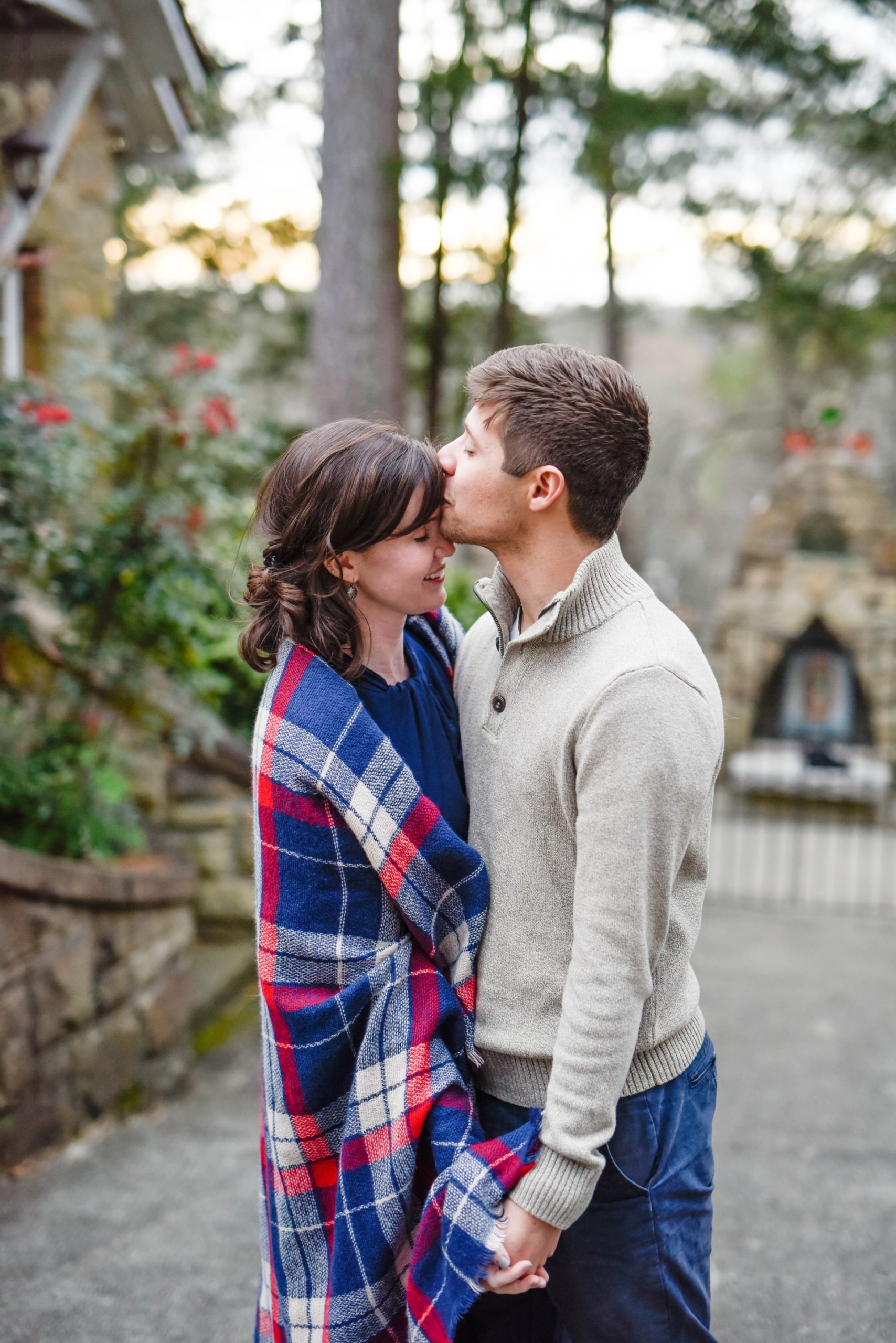To understand what causes codependency in relationships, it is first necessary to understand what codependency is and what it is not. One dictionary definition of codependency says it is based on a psychological state of mutual dependence between two people, especially when one partner relies emotionally on support and care for the other partner.
This can sound a lot like normal care in a loving relationship, but in actual practice, it is something quite different. Perhaps the most important distinction between codependency and compassion is the element of over-responsibility.
What does over-responsibility look like?
Over-responsibility can be most easily recognized when one member of a relationship is hyper-vigilant about the emotional state of the other. Imagine a husband already at home when his wife arrives home from work. She throws her coat over the couch; he hangs it up. She walks into the kitchen, he starts making her a drink or closes the curtains to block the setting sun, all without asking if she wants any of this.

If they have a mutual arrangement that includes these behaviors, then he isn’t being over-responsible. If on the other hand, he’s trying to guess her mood and do things that will make her happy, that is over-responsible and therefore codependent. Later on, the husband has an idea about cleaning the garage on the weekend, but his wife was hoping to work in the yard.
Instead of voicing her desire, she suppresses it and tells herself what she wants isn’t important. She is allowing him to roll over her, and by putting his feelings above hers for the sake of his feelings, being over-responsible. As you can see, over-responsibility can be amplified by Christian ideas of compassion.
 It may seem very Christian to make ourselves small and try not to have desires, but if we live only in relationship to the other, we will never be a whole person, with known needs and wants. Scriptures saying that we should consider other’s needs above our own are a good warning against selfishness and can be the basis for altruistic gestures, but they are not a good foundation for a mutual relationship between two fully formed, emotionally healthy, capable adults.
It may seem very Christian to make ourselves small and try not to have desires, but if we live only in relationship to the other, we will never be a whole person, with known needs and wants. Scriptures saying that we should consider other’s needs above our own are a good warning against selfishness and can be the basis for altruistic gestures, but they are not a good foundation for a mutual relationship between two fully formed, emotionally healthy, capable adults.
Over-responsibility then has two necessary components, 1) actions are taken on behalf of the other without verbal agreement, and 2) the person initiating the actions feels responsible for managing the other person’s emotional world by making them feel happy, or calm, or any other positive emotional state.
You are not responsible for anyone’s feelings.
When you tell some people that they are not responsible for anyone’s feelings, they look at you like a cow at a new gate. If their emotional structure is based on the premise that they are indeed responsible for the feelings of the people close to them, this will sound like heresy or at least a dangerous falsehood.
But we are not responsible for anyone else’s feelings. I may say or do things that evoke a response from someone, but their response is their responsibility. So, instead of saying, “You make me so mad!” it would be more accurate to say, “I’m having an anger response to what you just said (or did)!” Only you can get your anger or anxiety under control. No one can do it for you.
How many times have parents told their children that if they’re angry they should count to 10? If the child does so and experiences a decrease in angry feelings, it is because of their own actions. If a parent strokes the head of an anxious child and the child is calmed, the child is still having a response to the stimulus.
With adult words to describe it, the child might say, “I find that soothing” or more accurately, “I am having a soothing response to that.” To say, “you are making me calm” would be incorrect, because you are making yourself calm by your reaction to the soothing. You could resist it and not find it soothing at all.
What causes codependency in adult relationships?
 In response to the question, “What causes codependency in adult relationships?” the easy answer here is “codependency in adult relationships is caused by codependency in childhood relationships.” We usually learn codependency at either our mother’s knee, our father’s knee, or both. We learn to be codependent when a parent expects us to alter our feelings on command (“Stop crying!”) or expects us to know instinctively what they need or want or treat us in a way that suggests that we had better know what they want, or we will pay for it.
In response to the question, “What causes codependency in adult relationships?” the easy answer here is “codependency in adult relationships is caused by codependency in childhood relationships.” We usually learn codependency at either our mother’s knee, our father’s knee, or both. We learn to be codependent when a parent expects us to alter our feelings on command (“Stop crying!”) or expects us to know instinctively what they need or want or treat us in a way that suggests that we had better know what they want, or we will pay for it.
A parent who shifts easily from calm to anger is likely to raise angry (internally, because they dare not show it), hypervigilant children prone to codependency. A parent who processes their negative emotions with their child (for example, confiding their pain in age-inappropriate ways or asking the child to say something funny to make the parent feel better), will likely raise dependent, hypervigilant children prone to codependency.
Some children will be predisposed to codependency based on personality. As lovely as it is for a child to want to please a parent, if that desire to please is based on a conditional system for receiving love and attention – that is, if the message from the parents is “I love you when you get good grades” or “I love you when you clean up your room,” – the child is likely to learn to be codependent.
A desire to make someone happy is not necessarily codependence. Wanting to see a smile on the face of a loved one in response to a gift is not codependence. Requiring them to be pleased by what you gave them, is.
The ways of relating we learn when we are young are carried into adulthood. If I learned to be responsible for my mother’s feelings as a child, I would feel responsible for my spouse’s feelings when I am an adult. How we relate is part of our formation. We may have learned a way of relating that is ultimately unsustainable in a long-term, committed relationship.
Staying on your side of the street.
 You may have heard people in real life or in the movies say, “you better stay on your side of the street” when someone is being pushy. This idea of two sides of a street is useful when thinking of emotional interactions with others. I’m here, on my side of the street, with my thoughts and feelings, and you’re there on the other side with yours.
You may have heard people in real life or in the movies say, “you better stay on your side of the street” when someone is being pushy. This idea of two sides of a street is useful when thinking of emotional interactions with others. I’m here, on my side of the street, with my thoughts and feelings, and you’re there on the other side with yours.
If I’m trying to guess what you want instead of asking, I’m on your side of the street because I’m making up what I think you’re thinking. If you’re crying and I tell you it’s nothing to be sad about, I’m on your side of the street because I’m telling you how to feel.
Some tools can help us stay on our side of the street:
Ask permission. If you walk in the room and someone is reading in light that seems too dim, don’t just turn the light on. Ask them if they would like the light turned on. If someone drops something on the floor, don’t just pick it up. Ask them if they would like you to pick it up. If someone is sad, ask if you can help, don’t just try to cheer them up.
Manage emotional assumptions. If someone close to you seems angry, don’t make up stories about it, or imagine reasons for it, ask them what happened. If you think they are angry at you, much better to find out and either repair or feel relief than to guess wrong and escalate the situation.
Watch for manipulation. We learn at an early age how to manipulate people around us to get what we want. As adults, we may find ourselves in a relationship with someone for whom a disapproving glance is all that is needed to make them do what we want. That kind of control is a form of manipulation and not helpful for the growth and health of a relationship.
Closing Thoughts
We are fearfully and wonderfully made, astonishingly complex, and unique individuals. Learning more about our own ways of relating is a good beginning toward bringing a better version of ourselves into the relationship.
Undoing codependency in our own lives begins with awareness, which can lead to an understanding of our emotional past and bring changes that lead to a more individuated life, where we can learn to stay on our own side of the street.
“Reaching for the Skies”, Courtesy of Franciele Cunha, Unsplash.com, CC0 License; “Forehead Kiss”, Courtesy of Hannah Olinger, Unsplash.com, CC0 License; “A Shoulder to Lean On”, Courtesy of Niki Sanders, Unsplash.com, CC0 License; “View”, Courtesy of Justin Groep, Unsplash.com, CC0 License






